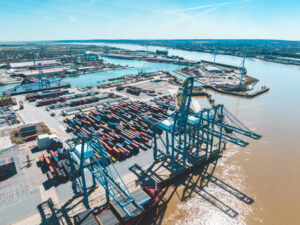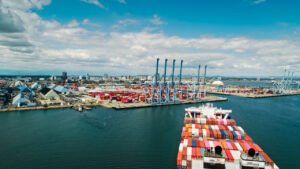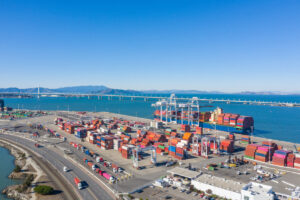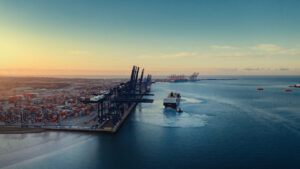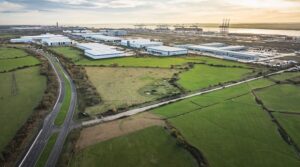Portlink Logistics Centre Ltd., part of the MGH Group in Bangladesh, has placed an order for two Konecranes E-ACE 6/7 ECC10 DS electric empty container handlers.
The fully electric lift trucks are expected to be delivered to Portlink’s container yard in Chattogram by the end of Q3 2025.
As the operator of South Asia’s largest inland container depot, Portlink Logistics Centre Ltd. aims to lead the Bangladeshi logistics sector towards lower CO2 emissions.
The new Konecranes electric handlers will join Portlink’s existing fleet of three Konecranes reachstackers, supporting the company’s efforts to expand operations while reducing emissions and operating costs.
The order was facilitated by Konecranes and Demag (Bangladesh) Ltd.
READ: Konecranes delivers electric crane to Ventspils Port
The Konecranes E-ACE 6/7 ECC10 DS is the fully electric version of the Liftace empty container handler. With zero tailpipe emissions, the electric model is designed to reduce the carbon footprint and achieve sustainability goals.
The equipment features modern high-voltage battery technology, enabling operation for 6-12 hours before recharging, and can regenerate up to 15 per cent of expended energy for later use.
In addition to environmental benefits, the electric handler reportedly offers dynamic driving with up to 20 per cent faster lifting speeds and acceleration compared to diesel-powered trucks. Noise and vibrations are reduced by up to 50 per cent, improving driver comfort.
Each unit ordered by Portlink is equipped with TRUCONNECT® Premium, which includes a tyre pressure monitoring system. This feature helps improve safety, reduce fuel consumption, and extend tyre life.
Portlink will also gain real-time insights into energy consumption, battery usage, and other equipment metrics.
READ: Sicilian port operator acquires strongest Konecranes crane
Syed Iqbal Ali, CEO at MGH Group, stated: “This investment supports our sustainability targets without compromising on performance. Over time, we expect a significant reduction in operational and maintenance expenses. The longer the machines are in use, the lower our total cost of ownership will be.”



